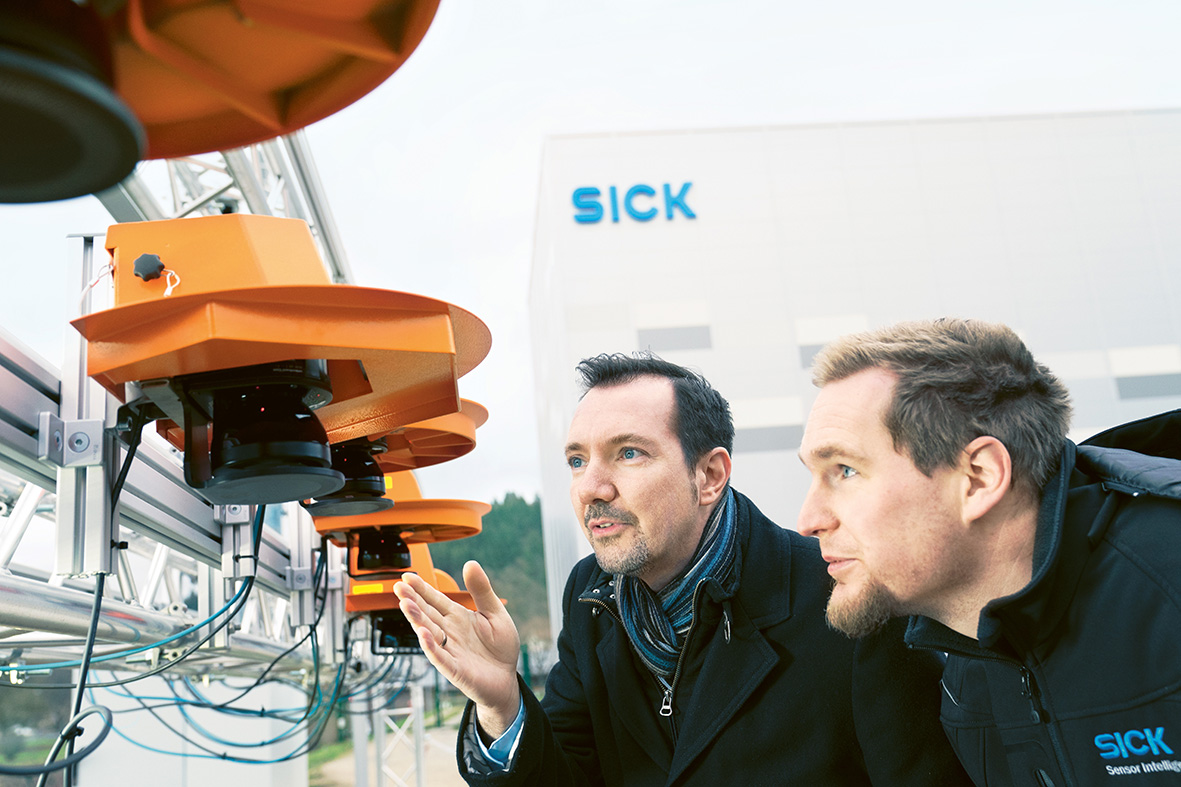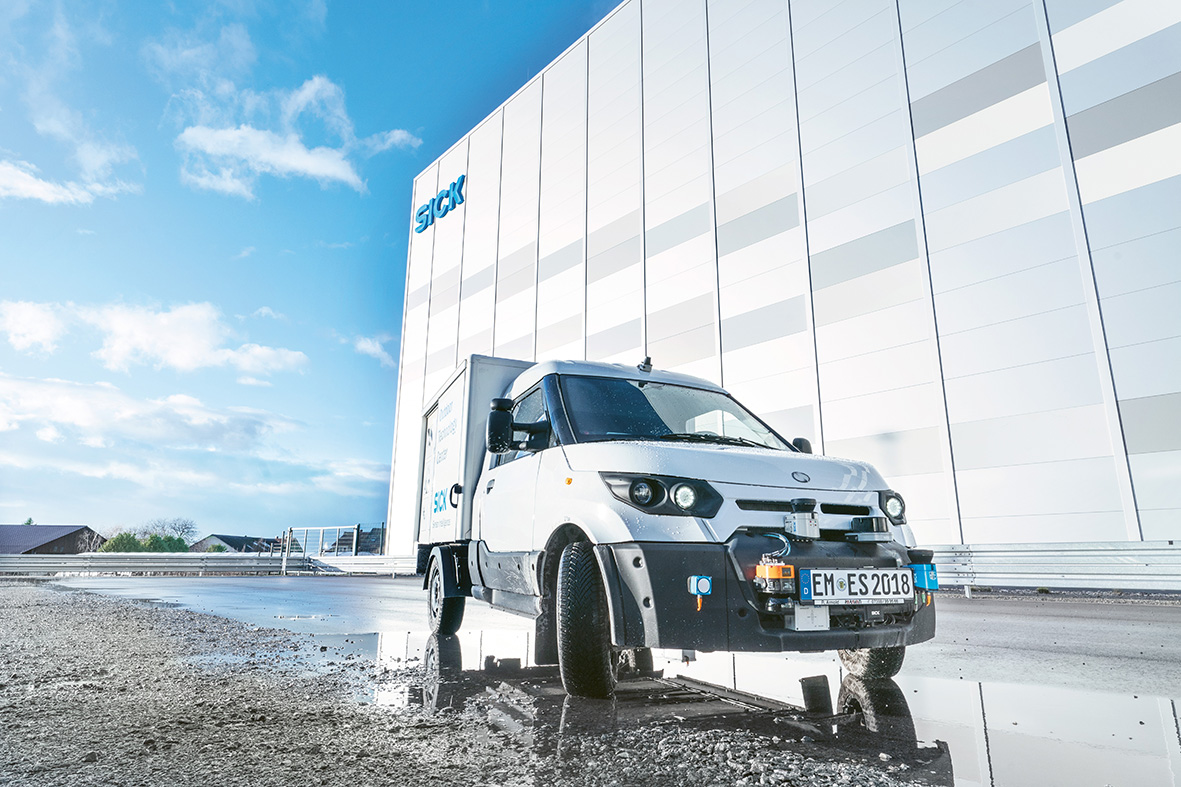
Annual Report
AUTOMATED PROCESSES INDOORS AND OUTDOORS

SICK can rely on a broad technology portfolio and on its experience in the automation of machines and vehicles.
Its mobile material flow solutions within factory buildings range from cellular conveyor systems and pallet shuttles through freely navigating, autonomous transport vehicles to narrow aisle forklifts, indoor cranes, and special vehicles. But solutions for use in outdoor applications and under changing weather conditions, or for mobile operation underground, are also no new challenge for sensors from SICK – they have long proven themselves in demanding applications at ports, in mines, and in many other areas of use.
SICK has been providing presentations, product training, and acceptance tests for customers at its own Outdoor Technology Center since summer 2018. A total outdoor testing area of 3,500 m² is available to cover seven different thematic aspects involving numerous customer applications outdoors, e. g., windrow detection for processing crop and mowed material on agricultural machinery, driver assistance systems, or the comprehensive monitoring of vehicle surroundings to increase operational safety outdoors as well. The results gained at the Outdoor Technology Center in Buchholz are merged with data from other testing stations to create a comprehensive scenario of automation solutions in outdoor use.
In addition to the Outdoor Technology Center in Buchholz, SICK also has a test area for traffic monitoring at Stans in Switzerland, a rain chamber at the Reute site, and a fog chamber at its headquarters in Waldkirch. SICK also tests its new sensors and sensor systems on the grounds of the Outdoor Technology Center, for example, the world’s first safety laser scanner certified for use in outdoor applications according to IEC 62998 – the outdoorScan3.

Automated guided vehicles are an everyday sight in many production halls. They transport loads and supply conveyor systems. They enable flexible and productive material flows and are a key technology for automation concepts of the future. The use of these transport systems in a working environment shared by humans and machines, however, has only been made possible through the use of safety laser scanners: They protect this collaboration and ensure the protection of people. But production chains often cannot be reduced to interconnected interior spaces. And the outdoorScan3 now permits automated guided vehicles to undertake tasks outdoors – without any additional protective equipment or need for considerably slower speeds. The outdoorScan3 thus closes an important gap in the automation of industrial processes. Outdoor operation presents safety sensors with much greater challenges than they face when used indoors.

There are no weather-related effects in industrial halls, nor do the light and temperature conditions undergo such extreme changes. Outdoors, however, sensors must be sensitive when weak signals have to be perceived in order to reliably detect persons. At the same time, however, the sensors must ignore signals that interfere with their operation. The outdoorScan3 dependably masters these challenges and offers reliable use within a temperature range from ‒25 to +50 °C.
»DESPITE VARYING WEATHER EFFECTS, THE outdoorScan3 CAN PROTECT STATIONARY AND
MOBILE APPLICATIONS WITHOUT ANY ADDITIONAL PROTECTIVE DEVICES.«
MICHAEL BADEJA, PRODUCT MANAGER MULTIDIMENSIONAL SENSORS, SICK
The outdoorScan3 now makes it possible to increase the level of automation of outdoor industrial processes, as is already familiar in the indoor industrial environment. Despite varying weather effects, the outdoorScan3 can protect stationary and mobile applications without any additional protective devices. This demonstrably intelligent functionality and the rugged design of the outdoorScan3 safety laser scanner have been certified according to IEC 62998 (the new standard for safety sensors) for the first time worldwide, opening up opportunities to work even more productively – while maintaining a high level of personal protection and achieving considerable increases in efficiency. Production and storage areas can be reinterpreted and optimally exploited. The resulting possibility of human-machine cooperation and the safe navigation of automated guided vehicles outdoors enable the creation of a real, autonomously controlled, value-added chain in the spirit of Industry 4.0.
With the outdoorScan3 safety laser scanner, SICK has closed another gap in the full automation of industrial processes. And with the leap from indoors to outdoors, SICK has once again shifted the limits of what is possible. ///